THIRD WEEK
Meditation is best done sitting on the floor. Sit on a small rug or mat. Choose a posture in which we can sit comfortably for at least one hour. In the beginning, 10-15 minutes breathing and meditation will be sufficient. We will be surprised how very fast we can learn sitting in Lotus posture.
It is important during meditation to synchronise deep yogic breathing with repetition of some sacred word. We shall be using ‘OM’ throughout the course. The results of yogic breathing and repetition of a sacred word are tremendous. They help attract an increased amount of prana. Once rhythmic action of prana is established it relaxes the body, calms the mind and helps deepen meditation.
MEDITATIVE POSTURES
Easy posture – Sukhasana (Fig 15)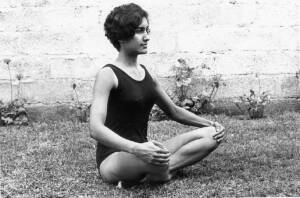
Thunderbolt posture – Vajrasana (Fig 17)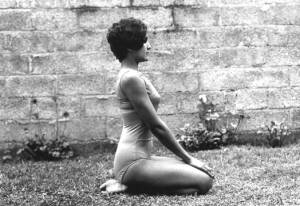
Warrior posture – Veerasana (Fig 19)
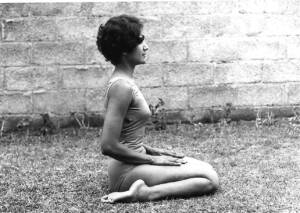
Lotus Posture – Padmasana
- Sit upright, legs stretched. (Fig 40)
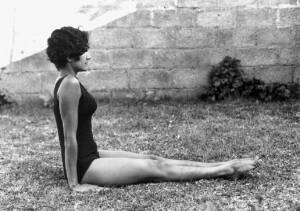
2. Bend right knee. Cross right foot over left thigh. (Fig 41)
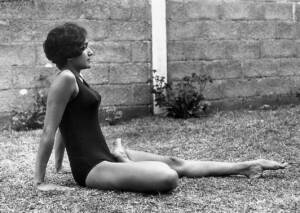
3. Cross left foot over right thigh. (Fig 42)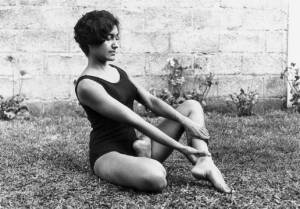
4. Rest palms on knees. Breathe out. (Fig 43)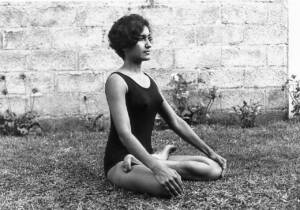
5. Hold posture for 3-5 breathing rounds.
6. Breathe out. Unlock legs and stretch them out slowly. (Fig 40)
7. Repeat bending left knee first.
Half Lotus Posture – Ardhpadmasana I
- Sit upright, legs stretched. (Fig 40)
- Bend right knee. Cross right foot over left thigh. Rest palms on knees. Breathe out
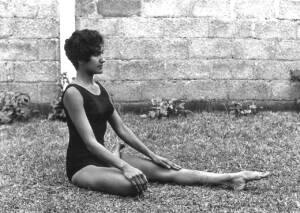
FIG 44 - Hold posture for 3-5 breathing rounds.
- Breathe out. Straighten right leg. (Fig 40)
- Repeat bending left knee first.
Half Lotus Posture – Ardhpadmasana II
- Sit upright, legs stretched. (Fig 40)
- Bend left knee and bring left leg under right thigh. (Fig 45)
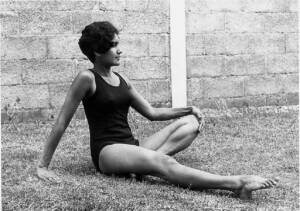
3. Bend right knee and bring right leg over the left leg. Keep hands on knees, palms up or down. Breathe out. (Fig 46)
4. Hold posture for 3- 5 breathing rounds.
5. Breathe out. Stretch legs.(Fig 40)
6. Repeat bending right knee first.
7. Relax
Auspicious Posture – Swastikasana
- Sit upright, legs stretched. (Fig 40)
- Bend right knee, right foot close to body, toes against left thigh. (Fig 47)
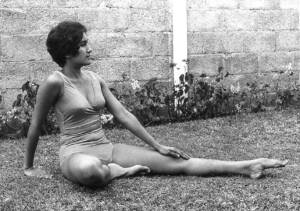
FIG 47
3. Cross left leg over right leg. (Fig 48)
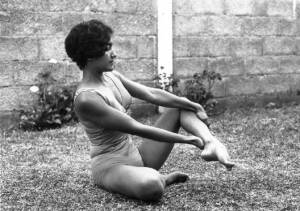
4. Gently insert left toes in between right thigh and calf, heel in contact with body. Keep hands on knees, palms up or down. (Fig 49) Breathe out.
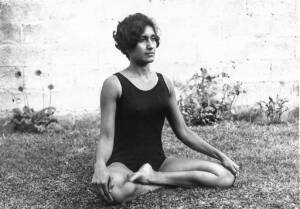
5. Hold posture for 3-5 breathing rounds.
6. Breathe out. Stretch legs. (Fig 40)
7. Repeat bending left knee first.
Perfect Posture – Siddhasana
- Sit upright, legs stretched. (Fig 40)
- Bend right knee and bring right foot close to body, toes against left thigh. (Fig 50)
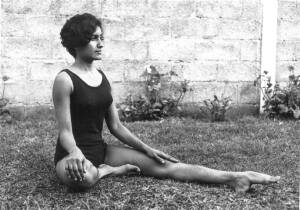
FIG 50
3. Cross left leg over right (Fig 51)
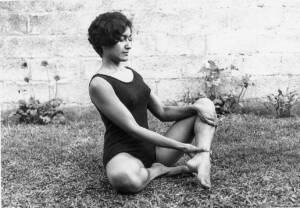
4. Left toes tucked in between right thigh and calf. (Fig 52)
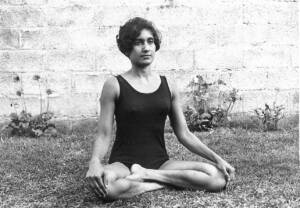
5. Keep hands on knees, palms up or down. (Fig 52) Breathe out.
6. Hold posture for 3-5 breathing rounds.
7. Breathe out. Stretch legs. (Fig 40)
8. Repeat bending left knee first.
Complete Yogic Breathing
- Sit lotus, thunderbolt, warrior or easy posture. Rest palms on knees.
- Slowly breathe in through nostrils, first expanding abdomen (Fig 53)
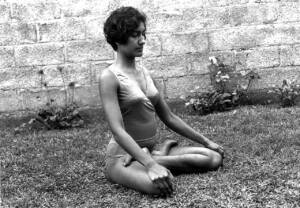
FIG 53 then chest (Fig 54)
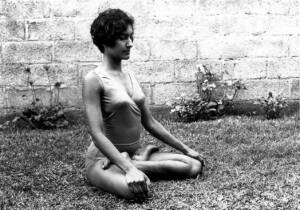
FIG 54 finally raising shoulders (Fig 55)
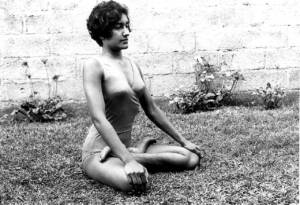
FIG 55 All three stages are performed in a smooth continuous movement.
3. Exhale slowly, first drawing in the abdomen (Fig 56)
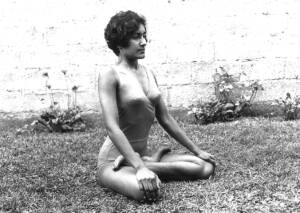
then lowering chest (Fig 57),
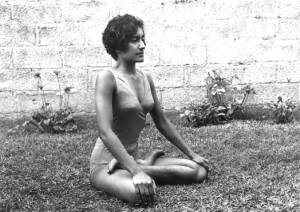
last lowering shoulders (Fig 58).
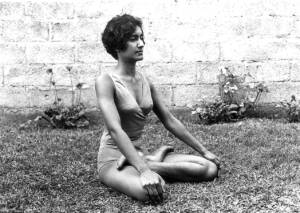
This completes one breathing round.
4. Complete 3-5 breathing rounds. Breathe to the ratio 1:2. Breathing in 1: Breathing out 2.
MEDITATION TECHNIQUE
Choose any of the above postures where we will be most comfortable. In normal circumstances we become restless and fidgety after a few minutes of sitting. Our aim is to be so comfortable that we no longer feel the body. Look ahead to be sitting for a good 15 minutes, lost in deep yogic breathing and mental repetition. We always use ‘OM’. It may be any other sacred word of your choice. Meditation should always be practiced with deep yogic breathing.
While sitting, rest the hands on the knees, palms up with the tips of index and thumb just touching. Keep the other fingers straight. Keep the spine very straight. Close eyes. Breathe out. Breathing in, slowly and deeply, mentally repeat ‘OM’ once. Pause. Breathing out, slowly and deeply, mentally repeat ‘OM’, ‘OM’. Keep the mental repetition for the whole time you meditate. Always breathe to the ratio 1:2. Breathing in 1: Breathing out 2. Synchronise perfectly breathing and repetition of ‘OM’. We will gradually reach a state of blissful well being.
After three months, we can gradually increase meditation time by five to ten minutes. After meditation, always relax in Corpse posture for some 5-10 minutes.
